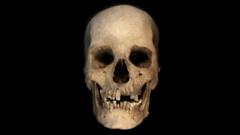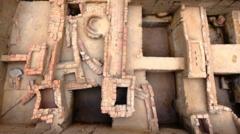A recent DNA analysis of a 4,500-year-old skeleton in Egypt highlights genetic connections with Mesopotamia, shedding light on the cultural exchanges that contributed to the evolution of two of history's grandest civilizations.
DNA Discoveries Illuminate Interconnections in Ancient Civilizations

DNA Discoveries Illuminate Interconnections in Ancient Civilizations
New genetic analysis reveals links between Ancient Egypt and Mesopotamia, reshaping our understanding of early civilizations.
A groundbreaking DNA analysis of a man who lived approximately 4,500 years ago in the Nile Valley is challenging traditional narratives of Ancient Egyptian history. The skeleton, uncovered in a pottery coffin, belonged to a 60-year-old individual, who was likely a potter. Intriguingly, testing revealed that 20% of his DNA originated from ancestors in Mesopotamia, modern-day Iraq, providing the first concrete genetic evidence of migration and interaction between these two ancient societies, previously thought to be mere theorized links.
Prof. Pontus Skoglund of the Francis Crick Institute emphasized the potential of ancient DNA analysis in enhancing our understanding of historical events and the ordinary people who lived through them. This new method offers a complementary perspective to written records, predominantly authored by the elite, thus enriching the historical narrative.
The skeletal remains were sourced from a site near Nuwayrat, which is situated about 265 km south of Cairo. This era coincided with significant transformations in both Egypt and Mesopotamia, marked by the rise of farming and writing systems. While archaeological evidence suggested contact between the two cultures up to 10,000 years ago, direct evidence had remained elusive until now.
Researcher Adeline Morez Jacobs described the findings as pivotal, confirming substantial migration and exchange of ideas between these two centers of civilization. “We now have definitive evidence for the cultural and biological interchanges,” she noted, indicating a clearer timeline of transitions in agricultural and societal practices informed by these exchanges.
Further investigations into the man's burial revealed that he likely spent his youth in Egypt, with chemical analyses of his dental remains providing insights into his diet. Detailed examinations of the skeleton by Prof. Joel Irish illustrated him as a hardworking individual, with signs of extensive muscular development linked to the physical demands of pottery work.
The remains' survival through historical upheaval, including the bombing of Liverpool during World War II, has only added to the unique fortune of this discovery. The new insights, published in the journal Nature, highlight how advancements in genetic analysis can uncover forgotten narratives within ancient histories, emphasizing the value of diverse methodologies in archaeological research.

















